 To enhance service speed and avoid tariff delays, we've opened a US warehouse. All US orders ship directly from our US facility.
To enhance service speed and avoid tariff delays, we've opened a US warehouse. All US orders ship directly from our US facility.
| Cat. No. | Product Name | Field of Application | Chemical Structure |
|---|---|---|---|
| DC32320 | Alagebrium Chloride Featured |
Alagebrium Chloride, identified as ALT711, emerged as a pioneering pharmaceutical candidate developed by Alteon, Inc. It marked the first clinical attempt to address the crosslinks formed by advanced glycation endproducts (AGEs), a key factor in the aging process. By targeting and disrupting these crosslinks, Alagebrium aims to counteract the stiffening of blood vessel walls, a condition linked to hypertension, cardiovascular disorders, and various age-related degenerative issues caused by protein crosslinking. Clinical studies have demonstrated its efficacy in lowering systolic blood pressure and offering therapeutic advantages for individuals with diastolic dysfunction.
More description
|
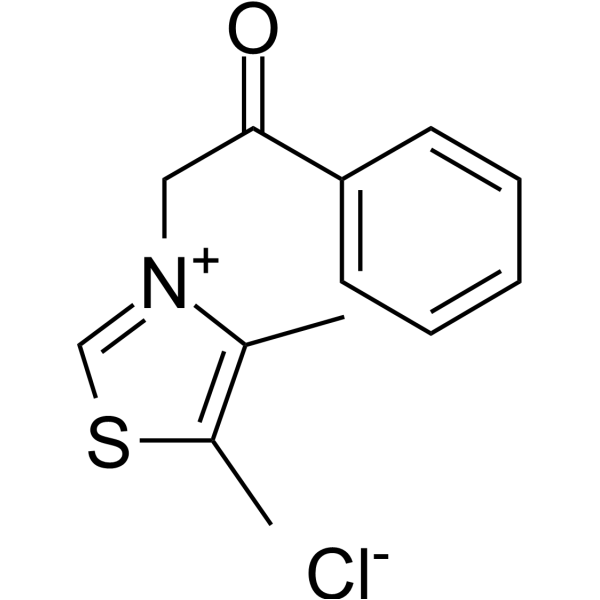
|
| DC72536 | Pemvidutide Featured |
Pemvidutide is a dual agonist targeting both GLP-1R and GCGR, demonstrating significant efficacy in reducing body weight, liver fat content, and serum lipid levels. Its unique mechanism of action makes it a promising candidate for research and therapeutic development in conditions such as non-alcoholic steatohepatitis (NASH) and obesity. This innovative compound offers potential for addressing complex metabolic disorders with a multifaceted approach.
More description
|

|
| DC60796 | HIFN Featured |
HIFN (2-fluoro-N-(2-(5-hydroxy-1H-indol-3-yl)ethyl)nicotinamide) is a synthetic small-molecule agonist of the tropomyosin-related kinase B (TrkB) receptor, designed to mimic brain-derived neurotrophic factor (BDNF) signaling. Structurally, HIFN replaces the six-membered lactam ring of its parent compound HIOC with a fluoropyridine moiety, rendering it achiral and configurationally stable. This modification enhances binding affinity and pharmacokinetic properties.
HIFN activates TrkB by inducing receptor dimerization and phosphorylation, triggering downstream survival pathways (PI3K/Akt, MAPK/Erk). In vitro, HIFN outperforms HIOC in TrkB activation (10 nM concentration) in primary neurons and NIH-3T3-TrkB cells. In vivo, systemic administration of HIFN (30–40 mg/kg) mitigates blast-induced retinal ganglion cell (RGC) degeneration and preserves visual function (contrast sensitivity, acuity) in mice for up to 8 weeks post-injury. Its effects are TrkB-dependent, as co-treatment with the TrkB antagonist ANA-12 abolishes neuroprotection.
HIFN exhibits a critical therapeutic window of ≤3 hours post-injury and dose-dependent efficacy, with no toxicity observed at 600 mg/kg (acute) or 40 mg/kg/day (40-day chronic). Safety assessments reveal no histopathological or biochemical abnormalities in vital organs.
By combining potent TrkB activation, blood-retina barrier penetration, and a robust safety profile, HIFN emerges as a promising therapeutic candidate for traumatic optic neuropathy and broader CNS disorders involving TrkB dysregulation.
More description
|

|
| DC70523 | JNJ-28583113 Featured |
JNJ-28583113 (JNJ28583113) a potent, selective, brain penetrant TRPM2 antagonist with IC50 of 126 nM (hTRPM2).JNJ-28583113 shows similar potency against species chimpanzee and rat TRPM2 with IC50 of 100 and 25 nM, respectively.JNJ-28583113 shows no significant (IC50>10 uM) reactivity towards PARP or PARG and a panel for multiple known kinases GPCRs and ion channels, nine other TRP channels with exception of TRPM5 (IC50<1 uM).Blocking TRPM2 via JNJ-28583113 caused phosphorylation of GSK3α and β subunits in cell assays.JNJ-28583113 also protected cells from oxidative stress induced cell death as well as morphological changes induced by non-cytotoxic concentrations of H2O2。JNJ-28583113 blunted cytokine release in response to pro-inflammatory stimuli in microglia.JNJ-28583113 was brain penetrant but not suitable for systemic dosing as it was rapidly metabolized in vivo, but the in-vitro pharmacology of JNJ-28583113 is the best in class.
More description
|

|
| DC60795 | Boscalid Featured |
Boscalid is a broad-spectrum fungicide widely used in agriculture to protect crops from fungal diseases. Its bioactivity stems from its ability to inhibit fungal respiration by targeting succinate dehydrogenase (Complex II) in the mitochondrial electron transport chain. By binding to this enzyme, Boscalid blocks electron transfer, disrupting ATP synthesis and energy production in fungal cells, ultimately leading to their death. This mechanism makes Boscalid highly effective against a wide range of fungal pathogens, including Botrytis, Alternaria, Sclerotinia, and powdery mildew species.
More description
|
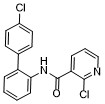
|
| DC60794 | SABA1 Featured |
SABA1 is an antibacterial agent effective against Pseudomonas aeruginosa and Escherichia coli. It works by inhibiting biotin carboxylase (BC), an enzyme that catalyzes the first step of the acetyl-CoA carboxylase (ACC) reaction, a process essential for bacterial fatty acid synthesis. What makes SABA1 particularly notable is its atypical inhibition mechanism: it binds to the biotin binding site of BC in the presence of ADP. This unique mode of action distinguishes SABA1 as a promising candidate for the development of new antibiotics, offering a potential solution to the growing challenge of antimicrobial resistance.
More description
|

|
| DC31184 | Idoxuridine Featured |
Idoxuridine is an anti-herpesvirus antiviral and anticancer drug. It is a nucleoside analogue, a modified form of deoxyuridine, similar enough to be incorporated into viral DNA replication, but the iodine atom added to the uracil component blocks base pairing. It is used only topically due to cardiotoxicity. It was synthesized by William Prusoff in the late 1950s. Initially developed as an anticancer drug, idoxuridine became the first antiviral agent in 1962.
More description
|

|
| DC32287 | Pinostrobin Featured |
Pinostrobin is a flavonoid with diverse biological activities, including antioxidant, anti-inflammatory, and anticancer properties. Pinostrobin is a dietary bioflavonoid discovered more than 6 decades ago in the heart-wood of pine (Pinus strobus). Pinostrobin has depicted many pharmacological activities including anti-viral, anti-oxidant, anti-leukaemic, anti-inflammatory and anti-aromatase activities. It is an inhibitor of sodium channel and Ca(2+) signalling pathways and also inhibits intestinal smooth muscle contractions.
More description
|

|
| DC33104 | DL-0108 Featured |
Pinocembrin, also known as DL-0108, is an androgen receptor ligand potentially for the treatment of acute stroke.
More description
|

|
| DC66605 | NDI-101150 Featured |
NDI-101150 is a highly selective, orally bioavailable small-molecule inhibitor targeting hematopoietic progenitor kinase 1 (HPK1/MAP4K1), a key negative regulator of T-cell signaling. This compound demonstrates potent immunomodulatory activity by enhancing T-cell activation and proliferation, while simultaneously exhibiting robust antitumor efficacy in preclinical models. Its mechanism of action involves disrupting HPK1-mediated suppression of immune responses, leading to improved T-cell function and sustained inhibition of tumor progression. With its favorable pharmacokinetic profile and specificity for HPK1, NDI-101150 represents a promising therapeutic candidate for cancer immunotherapy, particularly in settings where T-cell activity is compromised.
More description
|

|
| DC46930 | Sunvozertinib Featured |
Sunvozertinib is a potent inhibitor targeting the ErbB family of receptor tyrosine kinases, including EGFR (Epidermal Growth Factor Receptor) and Her2 (Human Epidermal Growth Factor Receptor 2), as well as BTK (Bruton's Tyrosine Kinase). It exhibits particularly strong activity against mutant forms of these kinases, which are often associated with resistance to existing therapies in cancers such as non-small cell lung cancer (NSCLC).
The IC50 values (half-maximal inhibitory concentr.
More description
|

|
| A441 | Eureka patent anti-PRAME Biosimilar(Anti-PRAME Reference Antibody) Featured |

|
|
| A440 | Genentech patent anti-Polyubiquitin Biosimilar(Anti-Polyubiquitin Reference Antibody) Featured |

|
|
| A439 | Novartis patent anti-PMEL17 Biosimilar(Anti-PMEL Reference Antibody) Featured |

|
|
| A438 | Genentech anti-PMEL17 Biosimilar(Anti-PMEL Reference Antibody) Featured |

|
|
| A437 | ATN-658 Biosimilar(Anti-PLAUR / uPAR / CD87 Reference Antibody) Featured |

|
|
| A436 | Diaccurate patent anti-sPLA2-GIB Biosimilar(Anti-PLA2G1B Reference Antibody) Featured |

|
|
| A435 | ATH3G10 Biosimilar(Anti-Phosphorylcholine Reference Antibody) Featured |

|
|
| A434 | Bavituximab Biosimilar(Anti-Phosphatidylserine Reference Antibody) Featured |
Bavituximab (Anti-Human Phosphatidylserine Recombinant Antibody) is a phosphatidylserine (PS)-targeting monoclonal antibody, suppresses tumor growth by targeting tumor vasculature and reactivating antitumor immunity. Bavituximab plus Paclitaxel (HY-B0015) and Carboplatin (HY-17393), have enhanced inhibition on non-small-cell lung cancer.
More description
|

|
| A433 | Novo Nordisk patent anti-PGLYRP1 Biosimilar(Anti-PGLYRP1 / PGRP-S Reference Antibody) Featured |

|
|
| A432 | IMC-2C5 Biosimilar(Anti-PDGFRB / CD140b Reference Antibody) Featured |

|
|
| A431 | Tovetumab Biosimilar(Anti-PDGFRA / CD140a Reference Antibody) Featured |
Tovetumab (MEDI-575) is an anti-PDGFRα monoclonal antibody that selectively blocks the PDGFRα signal transduction. Tovetumab can be used in the research of glioblastoma and non-small cell lung cancer (NSCLC).
More description
|
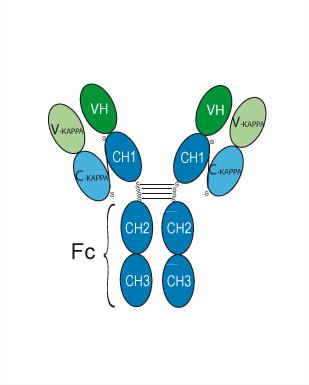
|
| A430 | Olaratumab Biosimilar(Anti-PDGFRA / CD140a Reference Antibody) Featured |
Olaratumab (IMC-3G3; LY3012207) is an anti-platelet-derived growth factor receptor alpha (PDGFRα) human monoclonal IgG1 antibody with antitumor activity.
More description
|
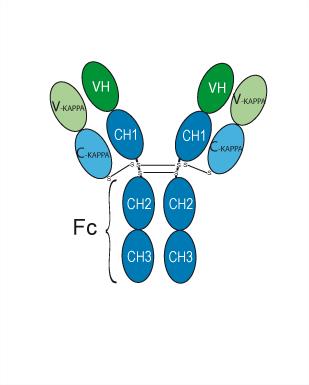
|
| A429 | Thrombogenics patent anti-PDGF-C Biosimilar(Anti-PDGFC / VEGFE Reference Antibody) Featured |

|
|
| A428 | MOR-8457 Biosimilar(Anti-PDGFB Reference Antibody) Featured |

|
|
| A427 | UCB patent anti-PD-1 Biosimilar(Anti-PDCD1 / PD-1 / CD279 Reference Antibody) Featured |

|
|
| A426 | Balstilimab Biosimilar(Anti-PDCD1 / PD-1 / CD279 Reference Antibod) Featured |
Balstilimab (AGEN2034) is a fully human monoclonal IgG4 antibody against PD-1.
More description
|

|
| A425 | Penpulimab Biosimilar(Anti-PDCD1 / PD-1 / CD279 Reference Antibody) Featured |
Penpulimab is an IgG1 backbone anti-PD-1 monoclonal antibody with antitumor activities.
More description
|
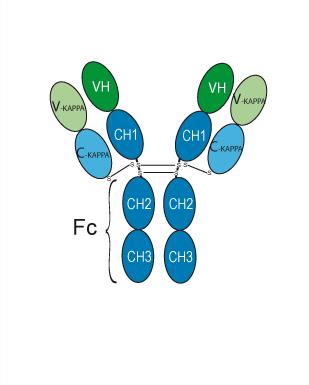
|
| A424 | Serplulimab Biosimilar(Anti-PDCD1 / PD-1 / CD279 Reference Antibody) Featured |
Serplulimab (HLX 10) is humanized monoclonal anti-PD-1 antibody. Serplulimab can be used in research of small cell lung cancer.
More description
|
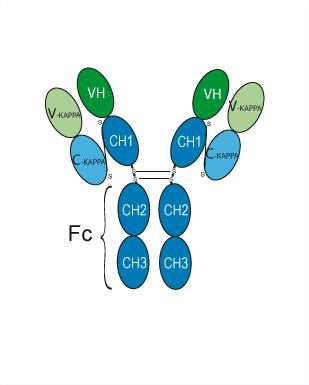
|
| A423 | Ezabenlimab Biosimilar(Anti-PDCD1 / PD-1 / CD279 Reference Antibody) Featured |
Ezabenlimab (BI-754091) is an anti-PD-1 mAb with binding constant Kd value of 6 nM (CHO cells). Ezabenlimab blocks the interaction of PD-1 with PD-L1 and PD-L2. Ezabenlimab increases interferon-γ secretion in T cells, and inhibits tumor growth in vivo.
More description
|
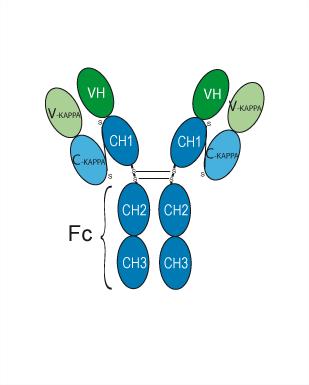
|